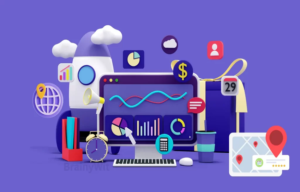Protection against child trapping (cybergrooming)

which can be translated as ” Pedotrapage online requests for sexual purposes” is a very important topic. These are mostly adults posing as children to approach children on platforms and circumvent them for sexual purposes. This means that they flatter or groom them in such a way that at first a close virtual friendship is formed. Often the “disguised” adults try to get more and more information about the child through virtual chats and gifts. Once the child has opened up about his problems, the so-called friend suggests help or exploits the secrets entrusted to him to blackmail him. Most of the time, they then claim nude photos of minors,
This is a particularly sensitive subject in the case of mobile devices, since children are usually reachable there at all times. Several studies prove the permanent online presence of children via their mobile devices – even in secret from their bed.
On this subject, the experts are calling for parental control software, in particular a control of social networks which is not however provided by any system. There should be a control function that automatically reacts when the child enters pre-defined personal information. An analysis function capable of automatically recognizing and classifying the content of an image would be desirable. All recorded information should then be available in a report.
In this complex area, all the parental control functions of operating systems fail. Image analysis is technically possible, but no system offers it. So far, none of the parental control software tested in the lab offers this feature.
Some products available on the market already offer all the other functions. An AV-TEST test will be carried out soon on this subject.
Securing the private sphere – not helping data thieves
The theft of private data almost always has the same context: the attackers seek to gain access to access data and passwords. Identity theft for online attacks or scams is also a common goal. For this, attackers typically use infected e-mails, hack ad servers and deliver banners with malicious programs or demand the entry of personal data, access data and passwords on fake websites. .
This safe area is of course not only important for children, but for all users of a device. But if eg. a mobile device is only used by a child, it should imperatively be provided with protection. Indeed, some adults are e.g. able to recognize a spoofed email containing a malicious link. Children are more carefree and often click or enter data without asking questions.
That’s why experts call for a classic antivirus suite to be integrated into children’s software, along with an ad blocker and a function that protects personal data. Likewise, they consider that a device location function would be a good idea.
Windows, MacOS and iOS systems have internal tools to protect against malicious attacks. Windows certainly does this with the Defender protection suite, but it does not have an ad blocker and does not protect personal data. MacOS and iOS work a bit better. They provide privacy protection tools and even an ad blocker in the case of MacOS. All these functions cannot be found at Google and Amazon. Device location is obviously only useful for mobile devices. iOS and Google offer it. Amazon with Fire OS does not offer it.
Conclusion: Parental control features of operating systems only half protect
Testing the parental control functions within the systems or using their additional tools shows how patchy and imperfect the protection is. Operating system vendors usually offer protection in some areas – and in others absolutely none. The testers gave some of the systems a Plus for the presence of a function corresponding to the 7 threats. However, the presence of a function is not always good. The report functions are the best example of this. The systems make them available, but the content and informational value leave something to be desired. The filtering of sites certainly makes it possible to exclude pornography, but violence, weapons and gambling remain freely accessible. When it comes to the most important area of child protection, namely cyberrooming, the systems are failing all along the line. And the results are just as bad when it comes to the protection of personal data.
All this is not enough to protect children effectively.





